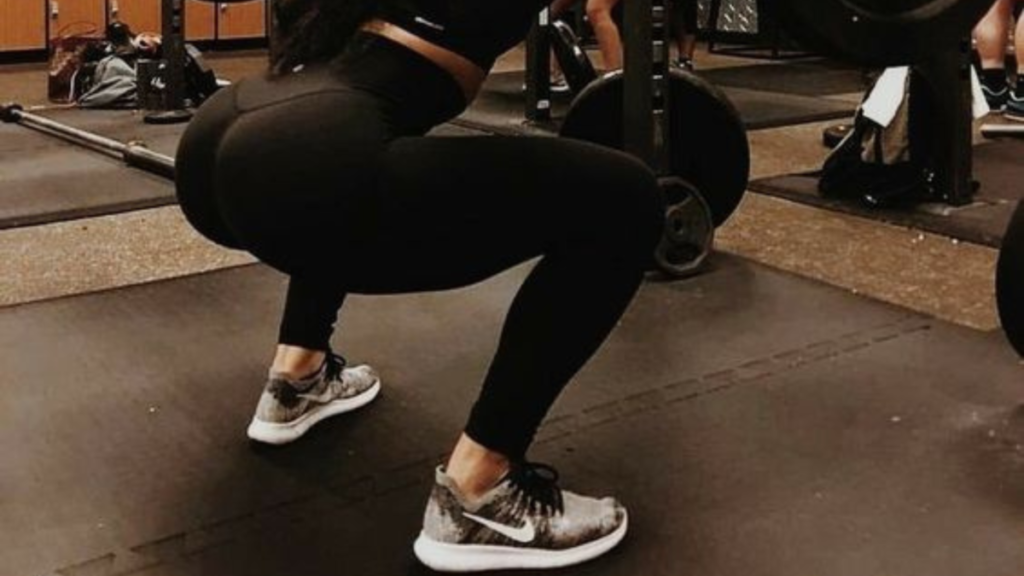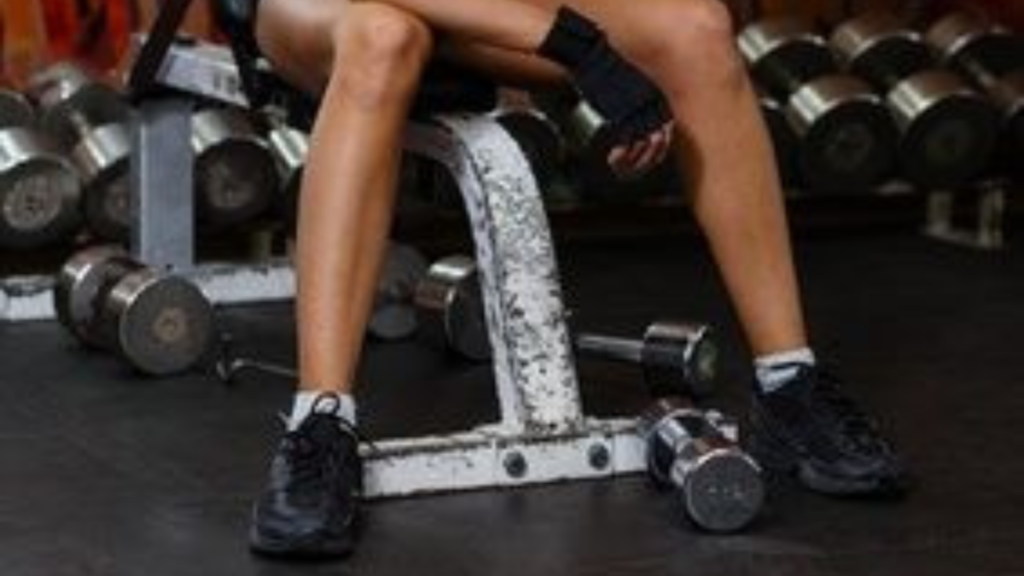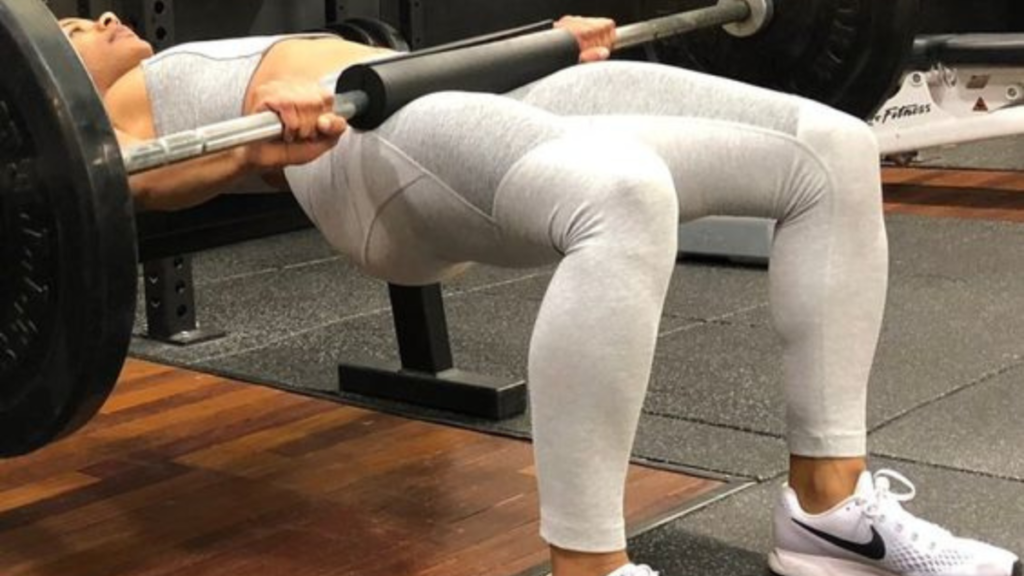
Although I often wear running shoes to the gym, I’ve never considered my trail running shoes as an option. The simple reason is that my trail running shoes are too dirty from the trails and I don’t want to trample mountain dirt all over the gym.
The aggressive tread patterns on trail running shoes may not be ideal for certain gym surfaces. However, the added traction and stability can be beneficial for certain aspects of a gym workout. Consider the type of exercises you’ll be doing and choose the shoes best suited to your fitness goals.
Let’s take a closer look at the instances where trail running shoes can be a viable option for the gym.
Can I Wear Trail Running Shoes In The Gym
Trail running shoes can be a versatile option for indoor workouts in the gym. While primarily designed for outdoor trails, these shoes can offer unique advantages when used in a gym setting. The rugged outsoles of trail running shoes provide excellent traction, which can be beneficial for activities like weightlifting or high-intensity interval training. Additionally, the stability features of trail shoes can help with balance and support during various exercises.
However, there are some drawbacks to consider when wearing trail running shoes in the gym. The aggressive tread patterns on trail shoes may not be ideal for certain gym surfaces, such as smooth gym floors or treadmills. The added weight and bulkiness of trail shoes compared to traditional gym shoes could also impact agility and speed-focused workouts.
Ultimately, the decision to wear trail running shoes in the gym comes down to personal preference and specific workout activities. Some individuals may find the added traction and stability beneficial, while others may prefer the lighter weight and flexibility of traditional gym shoes. It’s essential to consider the type of exercise you’ll be doing and how the features of trail shoes align with your fitness goals.
Differences Between Trail Running Shoes and Gym Shoes
Trail running shoes and gym shoes serve distinct purposes due to their design and features. Trail running shoes are specifically engineered for outdoor terrains, with rugged outsoles and aggressive tread patterns that provide superior traction on uneven surfaces. In contrast, gym shoes are designed for indoor use, typically featuring smoother outsoles suitable for gym floors and treadmills.
The differences extend to the intended usage as well. Trail running shoes excel in providing stability and support on challenging trails, thanks to features like reinforced toe caps and protective overlays. On the other hand, gym shoes prioritize flexibility and lightweight construction to facilitate a wide range of movements during gym workouts, such as lateral movements and quick transitions.
While trail running shoes focus on durability and protection against rough terrain, gym shoes prioritize agility and versatility for dynamic indoor exercises. Understanding these distinctions can help individuals make informed decisions based on their fitness activities and preferences, ensuring optimal performance and comfort during workouts.
Traction and Stability: Pros and Cons
When comparing the traction of trail running shoes to gym shoes on different gym surfaces, it’s essential to consider the pros and cons of each. Trail running shoes typically offer superior traction due to their rugged outsoles and aggressive tread patterns. This enhanced traction can be beneficial for activities that involve quick lateral movements or explosive exercises, providing stability and grip on slippery or uneven surfaces.
However, the increased traction of trail running shoes may also have drawbacks in a gym setting. The aggressive tread patterns that excel on outdoor terrains may be excessive for indoor gym floors, potentially causing unnecessary friction or discomfort during certain movements. Additionally, the rugged outsoles of trail shoes may not be as conducive to smooth transitions or pivoting motions commonly performed in gym workouts.

Ultimately, while the enhanced traction and stability of trail running shoes can be advantageous for specific gym activities, it’s important to consider the potential limitations they may pose in a gym environment. Finding the right balance between traction and versatility is key to ensuring optimal performance and comfort during indoor workouts.
Durability and Longevity
Trail running shoes are designed to withstand the rugged terrains and harsh conditions of outdoor trails, but how do they fare in the controlled environment of a gym? When it comes to durability and longevity, trail running shoes may face challenges in the repetitive movements and wear-and-tear of gym workouts. While trail shoes are built to be sturdy and resilient, the specific demands of gym activities, such as constant pivoting, jumping, and lateral movements, can put additional strain on their construction.
In comparison to dedicated gym footwear, trail running shoes may show signs of wear more quickly in a gym setting. The rugged outsoles and durable materials that excel on trails may wear down faster on indoor gym floors, impacting their overall longevity. Additionally, the specialized features of trail shoes, such as rock plates and protective toe caps, may not be as essential for gym workouts, potentially affecting their durability in this environment.
Considering the balance between durability and performance is crucial when deciding whether to wear trail running shoes in the gym. While they can offer durability for specific activities, their longevity in a gym setting may be influenced by the intensity and frequency of use.
Comfort and Fit
When considering the comfort and fit of trail running shoes for indoor activities like gym sessions, it’s essential to evaluate how they perform in a different environment. While trail running shoes are known for their comfort on outdoor trails, their suitability for indoor use may vary. The importance of proper fit cannot be overstated, as it directly impacts your comfort and performance during gym workouts.
Trail running shoes may offer a comfortable fit due to their cushioning and support features, but their design may not be optimized for the specific movements and exercises commonly performed in a gym setting. Factors such as flexibility, weight, and breathability play a crucial role in determining the overall comfort of the shoes during indoor activities.
Ensuring that your trail running shoes fit properly and provide adequate support can enhance your comfort level and reduce the risk of discomfort or injury during gym sessions. While trail shoes can offer comfort for certain activities, it’s important to consider how their design and features align with the demands of indoor workouts to optimize your overall comfort and performance.
Impact on Performance
Wearing trail running shoes in the gym can have a significant impact on your performance during various types of exercises. When it comes to agility, the sturdy construction and traction of trail shoes may provide stability during lateral movements, enhancing your ability to change direction quickly and efficiently. However, the heavier weight of trail shoes compared to traditional gym shoes could potentially hinder agility in exercises requiring swift footwork.
In terms of speed, the rugged outsole of trail running shoes may offer excellent grip on different surfaces, allowing for better traction and propulsion during sprints or dynamic movements. On the flip side, the added weight and bulkiness of trail shoes might impede speed in activities that demand swift and light-footed motions.
Regarding overall comfort, the cushioning and support features of trail running shoes can provide a comfortable experience during gym workouts, especially for exercises with high impact on joints. Nevertheless, the robust design of trail shoes may feel less breathable and flexible compared to gym-specific footwear, potentially affecting comfort levels during prolonged gym sessions. Balancing the benefits and drawbacks of wearing trail running shoes in the gym is crucial to optimizing your performance across various exercises.
Breathability and Moisture Management
Trail running shoes are designed to handle rugged outdoor terrains, which may raise concerns about their ability to manage heat and moisture during indoor gym workouts. The breathability of trail shoes plays a crucial role in ensuring comfort during intense training sessions. The materials used in these shoes are often breathable to allow airflow and prevent overheating, which can be beneficial for maintaining a comfortable temperature for your feet.
Moreover, the moisture-wicking properties of trail running shoes help to manage sweat and moisture buildup, keeping your feet dry and reducing the risk of blisters or discomfort. This feature is particularly important during high-intensity workouts where sweat production is higher.
While trail running shoes may excel in breathability and moisture management outdoors, their performance in a gym setting can vary depending on the intensity and duration of your workouts. Considering the balance between breathability, moisture-wicking capabilities, and overall comfort is essential when deciding whether trail shoes are suitable for indoor training sessions.
Support and Cushioning
Trail running shoes offer a unique blend of support and cushioning that can be beneficial for various gym activities. When it comes to weightlifting, the stability provided by trail shoes’ sturdy construction and supportive midsoles can help maintain proper form and reduce the risk of injuries. The cushioning in trail shoes may not be as dense as that in gym-specific footwear, but it still offers adequate shock absorption for activities like high-intensity interval training.
In comparison to gym shoes, trail running shoes typically have more robust outsoles and midsoles designed to handle rough terrain, which can translate to better support and stability during dynamic movements in the gym. However, gym shoes may have specialized features like reinforced heels for weightlifting or extra cushioning for impact protection during cardio exercises.
Ultimately, the level of support and cushioning needed for gym activities depends on individual preferences and specific workout routines. Trail running shoes can be a versatile option for those looking for a balance between support, cushioning, and versatility in the gym.
Aesthetic Considerations
Trail running shoes bring a unique aesthetic to the gym culture, blending functionality with style. While traditional gym shoes may prioritize sleek designs, trail running shoes offer a rugged and outdoorsy look that can make a statement in the gym. The bold colors, durable materials, and aggressive tread patterns of trail shoes can add a touch of adventure to your workout attire.
From a style perspective, wearing trail running shoes in the gym can showcase a sense of versatility and individuality. Embracing the unconventional choice of footwear can demonstrate a willingness to break away from the norm and prioritize performance over traditional gym fashion norms. Additionally, the growing trend of athleisure wear has made it more socially acceptable to wear sport-specific shoes like trail runners in various settings, including the gym.

Overall, the aesthetic appeal of trail running shoes in the gym lies in their ability to stand out, make a statement, and reflect a unique sense of style and functionality. Embracing trail shoes in the gym setting can be a way to express personal flair while still prioritizing comfort and performance.
Potential Risks and Injury
While wearing trail running shoes in the gym can offer unique benefits, there are potential risks to consider. One concern is the increased risk of injury due to the rugged design of trail shoes, which may not provide the same level of support and cushioning as traditional gym shoes. This can lead to strain on certain muscle groups, especially if the shoes do not offer adequate stability during weightlifting or high-impact activities.
To mitigate these risks, it’s essential to choose trail running shoes with sufficient support and cushioning for gym workouts. Look for models that offer a balance between stability and flexibility to reduce the strain on your feet and legs. Additionally, incorporating strength training exercises to target muscle groups that may be more vulnerable when wearing trail shoes can help prevent injuries.
By being mindful of the potential risks and taking proactive measures to address them, you can enjoy the benefits of wearing trail running shoes in the gym while minimizing the chances of injury or strain. Prioritizing proper footwear selection and incorporating targeted exercises can help you stay safe and comfortable during your workouts.
Cleaning and Maintenance Tips
When using trail running shoes in the gym, proper cleaning and maintenance are essential to ensure their longevity and performance. To maintain trail shoes in a gym environment, start by regularly cleaning them after each workout session. Use a gentle brush to remove dirt and debris from the outsoles and uppers. For deeper cleaning, hand wash the shoes with mild soap and water, then air dry them away from direct heat sources.
Preserving the integrity of trail running shoes also involves proper storage. Allow the shoes to fully dry before storing them in a cool, dry place to prevent mold and mildew growth. Avoid leaving them in a damp gym bag or locker for extended periods.
Additionally, consider rotating between multiple pairs of trail shoes to reduce wear and tear on a single pair. This can prolong the lifespan of the shoes and maintain their cushioning and support over time. By following these cleaning and maintenance tips, you can keep your trail running shoes in top condition for gym workouts, ensuring both performance and durability.
Personal Preference vs. Practicality
When deciding whether to wear trail running shoes in the gym, the choice often boils down to “personal preference” versus “practicality.” Some gym-goers may prefer the rugged design and outdoor feel of trail shoes, finding them more comfortable and supportive during workouts. On the other hand, practical considerations come into play when assessing the specific needs of gym activities and equipment.
For those focused on performance and injury prevention, practicality may lean towards using specialized gym shoes that offer targeted support and cushioning for indoor exercises. However, personal preference should not be overlooked, as comfort plays a significant role in motivation and overall workout experience.
It’s essential for readers to evaluate their own comfort levels, performance goals, and the nature of their workout environment when making this decision. By considering both personal preferences and practical needs, individuals can strike a balance that maximizes both comfort and performance during gym sessions. Ultimately, the choice between trail running shoes and gym shoes should align with individual needs and preferences to enhance the overall workout experience.
